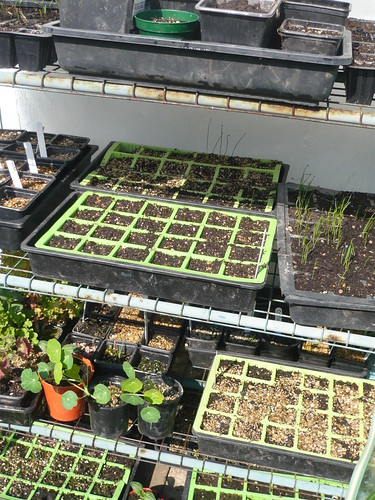Seed Sowing March
A great time to be getting your first crop of seeds sown.
The RHS seeds I ordered were late arriving but landed last week so I have 21 packets to sow this morning.
Covering Seeds
- There is no need to cover very fine seeds or seeds that need light to germinate. This includes Begonia, Alliums, and Roscoea for example.
- Covered with a layer of vermiculite most seeds will germinate in 30 days. If covering with compost reduce the depth of cover to little more than the size of the seed.
- Slower germinating seeds should be covered with grit instead of vermiculite.
- Place a glass or plastic propagating cover over the top to retain humidity and provide early protection. Ventilate as soon as seeds germinate.
Special Seed Treatments
- Cold moist stratification involves giving seeds a period of frost or cold to break dormancy. These seeds may take over a year to germinate so do not give up hope. Try 12 weeks in the fridge if there is room.
- Chipping (nicked with a knife or sandpaper) or softening seed coats may be needed for hard covered seeds like Lupins and Sweetpeas. This is to allow water to enter and start the germination proocess.
- Warm stratification may be necessary to mature an embryo. Put the seeds in damp compost in an airing cupboard for a couple of weeks prior to sowing.
General Seed Sowing Tips
- Use commonsense and read the seed packet. Follow the instructions where practical rather than slavishly.
- Seeds are pre-programmed to grow to maintain the survival of the species – just give them half a chance.
- Some seedlings resent root disturbance so sow where you want them to grow or in individual pots of a suitable size for the ultimate plant.
- Do not be too greedy by planting too close, better 5 good plants than 20 poor weedy specimens.
- Match the growing medium to the size of the seeds. Sow fine seeds in fine compost and bigger seeds in rougher compost
- Beware of damping off – seedlings dying due to fungus before they grow leaves.
Read Seed Storage tips and When to sow seeds
